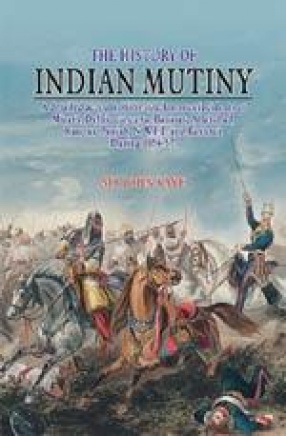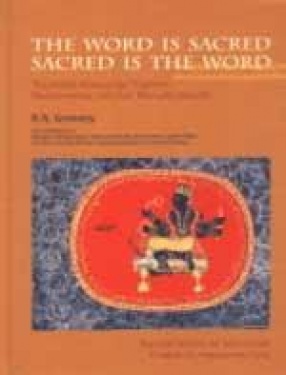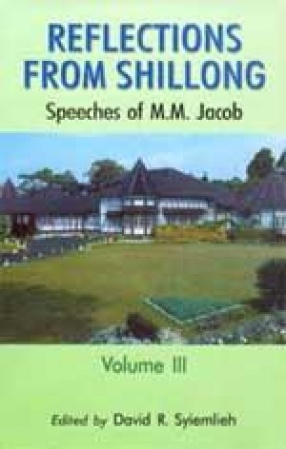Prime Minister Atal Bihari Vajpayee during his last visit to Islamabad had proposed that India and Pakistan should make preparations to jointly celebrate the 150th anniversary of the 1857’s ‘War of Independence’ in 2007. The proposal was simply ignored as nobody seemed to have any sort of interest in remembering the great uprising of the 19th century when religions of both the main communities of Indian population, Hinduism and Islam, had joined hands for the first time in history to incite their followers to take up arms against their British masters Niaz Ahmad of the Sang-e-Meel Publications, however, seems to be bent upon reminding us that the history-shaping events of 1857 are too important to be set aside. He has come out with reprints of two of the most important volumes on this topic. The first of the two — Mutiny Records — carries reports on the events of revolt that took place in various parts of the Punjab. These reports were submitted in 1858 by the commissioners of divisions and district officers of Punjab to Robert Montgomery who was then judicial commissioner of the province, next in authority to the provincial chief executive. This volume also contains Punjab Mutiny Report compiled by Montgomery himself from the reports submitted to him. All these reports were presented to Sir John Lawrence, chief commissioner of Punjab, in March 1858 and were later forwarded to the government of India. The reports were first made public in a blue book issued in 1859 by the Punjab government. The contents of the book were penned by responsible persons equipped with means of gathering information. The result is that Mutiny Records gives an ex-cathedra account of the events that took place in Punjab in 1857. A careful reading of these reports gives a clear impression that Punjabi soldiery and people did not show any sort of extraordinary interest in the mutiny or the war of independence as one may call it. There were many reasons for this lack of interest. But the main reason was that the British had captured Punjab, less than a decade ago, with the army that had been recruited from the Urdu/Hindi speaking areas, popularly known as Hindoostanees. These Hindoostanees were the people who spearheaded the uprising. The evidence provided by Sir John Lawrence says that the people of Punjab "despised and disliked the Hindoostanee soldiery." He says: "The Hindoostanees were boastful and vainglorious in their bearing towards the Punjabee troops, and occasionally had been oppressive in their conduct towards the people. It was the European Infantry and Artillery, and not the Hindoostanees, that had broken the flower of the Sikh chivalry in two successive campaigns in 1846 and 1848; and the Punjabees longed to prove their superiority as soldiers against the Hindoostanees. Again, the Sikhs cherished an especial dislike against the Mahomedans of Hindustan. They entertained an hereditary hatred against the city of Delhi, where Tegh Bahadoor, one of their famous warrior priests, was cruelly put to death, and where the limbs of the martyr were exposed at the gates. The Punjabees of all classes, Sikhs or Mahomedans, are fond of plunder, and the wealth of Delhi had been long notorious to all. The hope of sharing in such spoil turned the thoughts of many towards our service during the crisis." Sir John Kaye has elaborated some of the above mentioned points in his The History of Indian Mutiny, the other book issued by the Sang-e-Meel Publications. The book was completed in 1870 — that is, thirteen years after the uprising — and was first published from Calcutta in 1888. The original book was published in two volumes. Sang-e-Meel has published the first volume that carries matter related to North-Western part of the Indian subcontinent. Sir John Kaye keeps himself mainly to the narration of events that took place in the North-Western region of India during 1856 and 1857. He has chosen not to enter into controversies regarding the causes that had instigated a considerable part of native troops to break into revolt against their English masters. The sub-title of the Kaye’s book indicates his limits: ‘A detailed account of the synchronous incidents at Mirath, Delhi, Calcutta, Banaras, Allahabad, Kanpur, Punjab, N.W.F.P and Kashmir During 1856-57.’ He has, however, referred to remours that were widespread in Delhi in the beginning of 1857 regarding the coming of the Persian and Russian armies for "the deliverance of the King" Bahadur Shah Zafar. It was being believed that the king "would again be surrounded by all the splendour that irradiated the Moghal throne in the meridian of its glory". Such rumours created strong feeling of excitement in the old Imperial capital city where "the last Moghal Emperor" lived like "a pageant and a show". But, Kaye admits that "the pageantry, the show, the name, had never ceased to be living influences in the minds of the princes and people of India. Up to a comparatively recent period all the coins of India had borne the superscription of the Moghal; and the chiefs of India, whether Muhammadan or Hindu had still continued to regard the sanction given to their successions by that shadow of royalty, as something more assuring than any recognition which could come from the substance of British Government. If the Empire of Delhi had passed into a tradition, the tradition was still an honoured one". The great uprising, however, did not originate from the old imperial city. It started from Mirath, a great military station of those days some 50 kilometres away from Delhi. The 3rd Regiment of Native Cavalry broke into revolt there in the second week of May 1857. Their revolt spread to Delhi within 40 hours. Native troops at many other military stations also soon took up arms against the British authorities. The sepoy mutiny was not easily quelled. It took the British many months to restore their authority. John Kaye has artfully told the whole story. He has no sympathy for the Indians. But he does not prevent himself from paying rich tributes to those native sepoys and princes who stood with the English in their worst hour on the South Asian subcontinent. He is particularly censorious of Zeenat Mahal, the young wife of the old king, and refers to the palace intrigues engineered by her. But his book gives some hints which suggest that the queen was the only person in the imperial palace who had some inkling of the real motives of the English. She seems to be a sort of nationalist who dreamt of freedom from the foreign rule.
The History of Indian Mutiny
In stock
Free & Quick Delivery Worldwide
reviews
Bibliographic information
Title
The History of Indian Mutiny
Author
Edition
1st ed.
Publisher
Sang-E-Meel Publications, 2005
ISBN
9693517105
Subjects





There are no reviews yet.